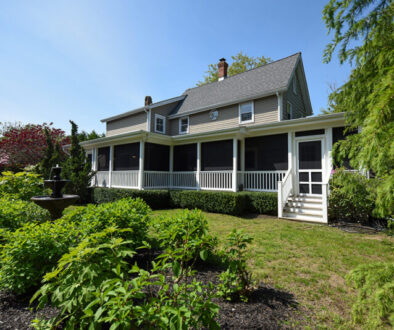Victorian Air Conditioning
In Jane Austen’s Pride & Prejudice, a debate occurs in Elizabeth’s family parlor between her younger sister, Kitty, and her mother and father, Mr. and Mrs. Bennett. It’s summer, the handsome young soldiers have moved on, and Kitty, as precocious as her name suggests, is bored. She wants to go to Brighton, the seaside resort popular with the rich and royal, but needs a chaperone. Her mother sympathizes, remembering her own young, carefree days.
“A little sea-bathing would set me up forever,” Mrs. Bennett famously says.
Brighton in England. Atlantic City, Cape May, Ocean Grove in the United States. Jane Austen set her novel in the first decade of the 1800s, and through the time of Queen Victoria’s reign, 1837-1901, people from all walks of life flocked to seaside resorts to enjoy time away from the dirty, dusty city to find excitement and fun, and to escape the heat.


“Hotels like the Coronado in San Diego, Mohonk Mountain House in New Paltz, New York, and the Chalfonte in Cape May, New Jersey became major tourist attractions, affluent travelers journeying from one to another as on a pilgrimage for the ultimate in leisure,” according to Thomas J. Schlereth, in Victorian America, Transformations in Everyday Life.
“Victorian resort hotels featured grand verandas, places for viewing and being viewed,” writes Schlereth. But those verandas were also designed purposefully to allow Victorian ladies and gentlemen to catch the cool sea breezes. Pocket windows, which reached all the way to the floor like those in Cape May’s 1879 Emlen Physick Estate formal parlor, opened to allow you to walk out onto the covered porch, where the shade and nearby trees cooled the air.
Staying cool in summer was not as easy in Victorian times as turning on the air conditioner is today. Architectural elements helped Victorians cope with the heat. Cupolas helped move hot, moist air up and out through the roof, and large windows caught the breezes and kept air moving. Hand fans, made of ostrich feathers or lace, were not just a fashion accessory—they were a practical necessity for Victorian women in summer. For a working person in Victorian times, there was little escape from the heat. The oven was hot for a cook, and the sun was relentless for those who worked outdoors. Ice was harvested from frozen northern lakes and ponds, delivered to warm climates, and kept cool below ground in ice houses, insulated by straw. Cutting off chunks for household use was laborious.

Improving health was the driving force for Victorian physician and inventor Dr. John Gorrie of Florida, who in the 1840s began experimenting with artificial cooling to relieve city residents of “the evils of high temperature,” according to Paul Lester, in the U.S Dept. of Energy’s publication, History of Air Conditioning. But it was Willis Carrier who engineered the first modern electrical air conditioning unit. Carrier designed a system in 1902 that controlled humidity using cooling coils and secured a patent for his “Apparatus for Treating Air.” Carrier saw the potential to benefit many other industries and developed his invention, starting his company, Carrier Air Conditioning Company, with six other engineers in 1918. The company’s research laboratory was in Newark, New Jersey.
The first widespread enjoyment of air conditioning was in Los Angeles and in New York movie theaters in the 1920s. By the 1930s, home air conditioners were being produced but were prohibitively expensive. By 1947, that problem was solved with the window air conditioner, as 43,000 units were sold that were compact, inexpensive, and fit in a home’s window. By the late 1960s, according to Lester, most new homes had central air conditioning, and window air conditioners were more affordable than ever. According to the Energy Information Administration, air conditioning is now in nearly 100 million American homes, representing 87 percent of all households.



